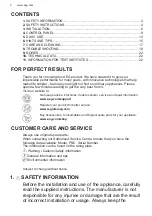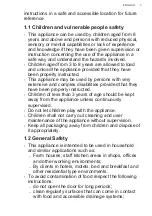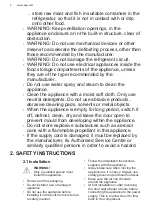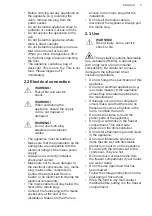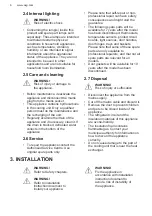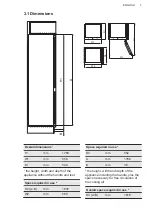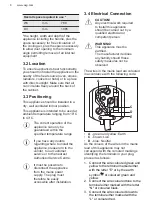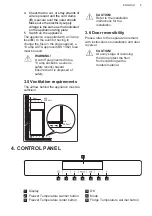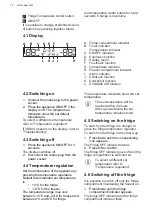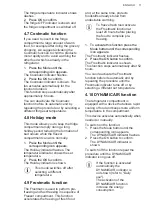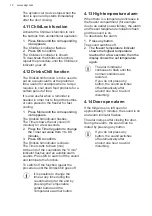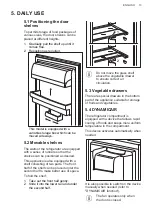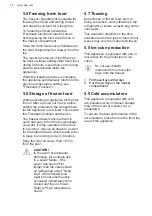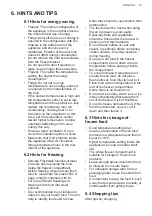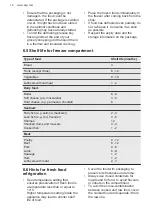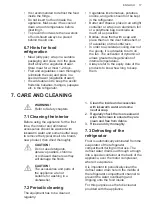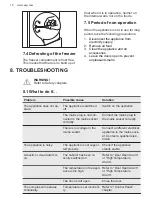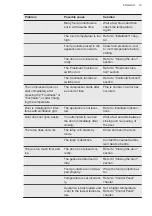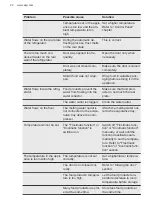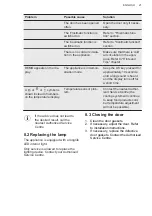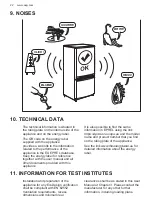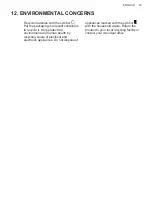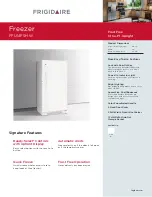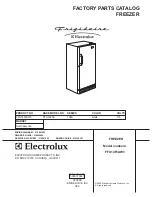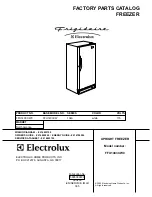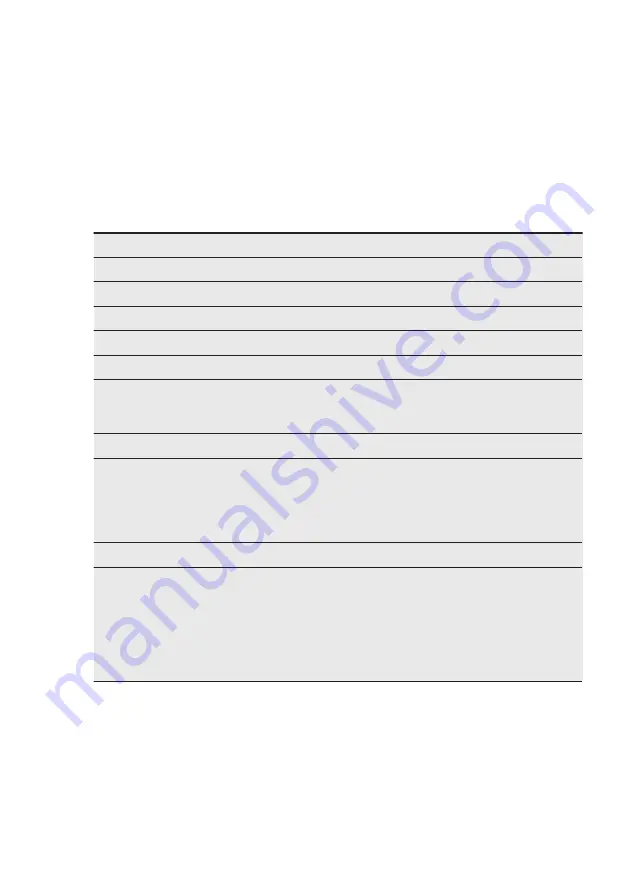
• Ensure that the packaging is not
damaged - the food could be
deteriorated. If the package is swollen
or wet, it might have not been stored
in the optimal conditions and
defrosting may have already started.
• To limit the defrosting process buy
frozen goods at the end of your
grocery shopping and transport them
in a thermal and insulated cool bag.
• Place the frozen foods immediately in
the freezer after coming back from the
shop.
• If food has defrosted even partially, do
not re-freeze it. Consume it as soon
as possible.
• Respect the expiry date and the
storage information on the package.
6.5 Shelf life for freezer compartment
Type of food
Shelf life (months)
Bread
3
Fruits (except citrus)
6 - 12
Vegetables
8 - 10
Leftovers without meat
1 - 2
Dairy food:
Butter
Soft cheese (e.g. mozzarella)
Hard cheese (e.g. parmesan, cheddar)
6 - 9
3 - 4
6
Seafood:
Fatty fish (e.g. salmon, mackerel)
Lean fish (e.g. cod, flounder)
Shrimps
Shucked clams and mussels
Cooked fish
2 - 3
4 - 6
12
3 - 4
1 - 2
Meat:
Poultry
Beef
Pork
Lamb
Sausage
Ham
Leftovers with meat
9 - 12
6 - 12
4 - 6
6 - 9
1 - 2
1 - 2
2 - 3
6.6 Hints for fresh food
refrigeration
• Good temperature setting that
ensures preservation of fresh food is
a temperature less than or equal to
+4°C.
Higher temperature setting inside the
appliance may lead to shorter shelf
life of food.
• Cover the food with packaging to
preserve its freshness and aroma.
• Always use closed containers for
liquids and for food, to avoid flavours
or odours in the compartment.
• To avoid the cross-contamination
between cooked and raw food, cover
the cooked food and separate it from
the raw one.
www.aeg.com
16

